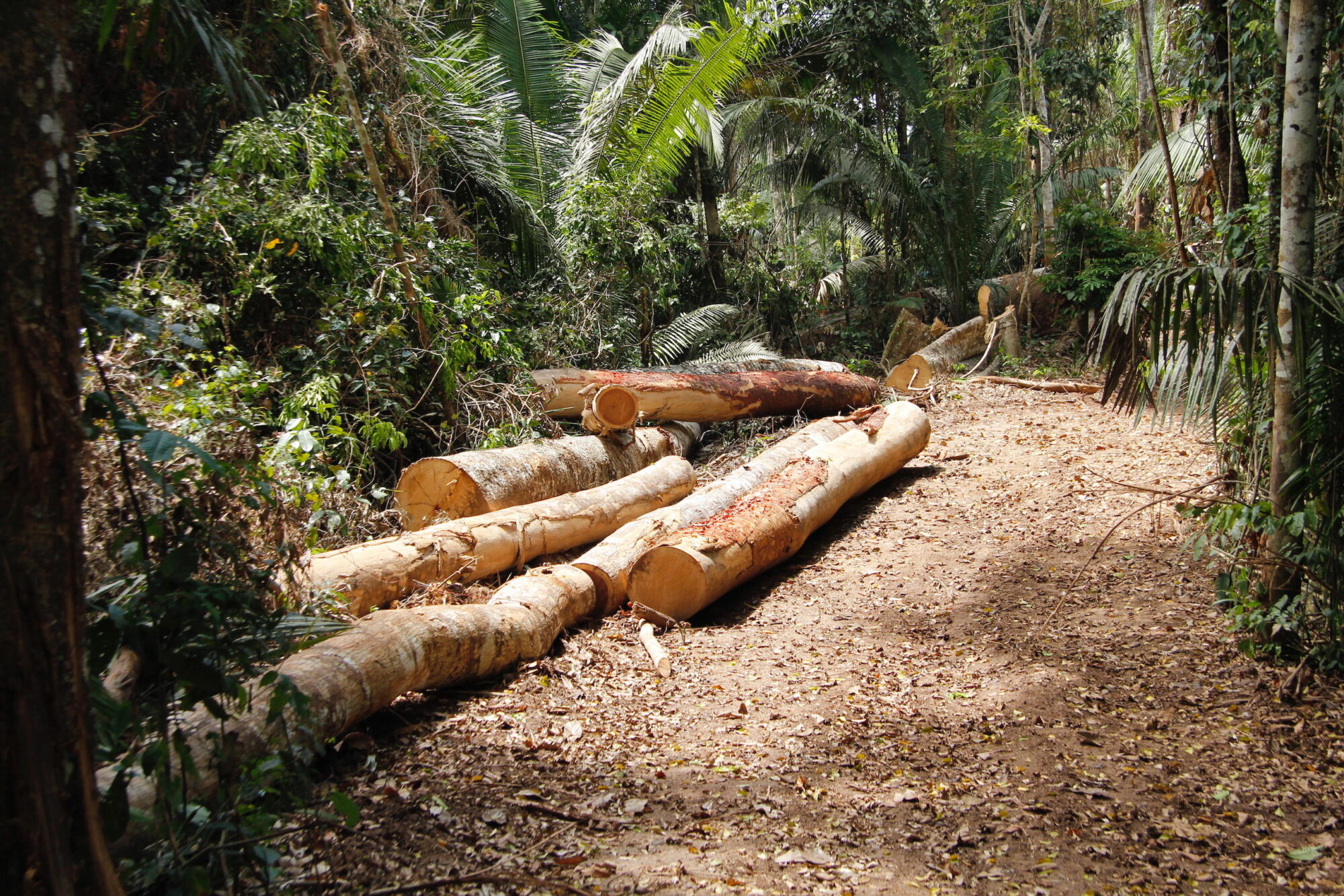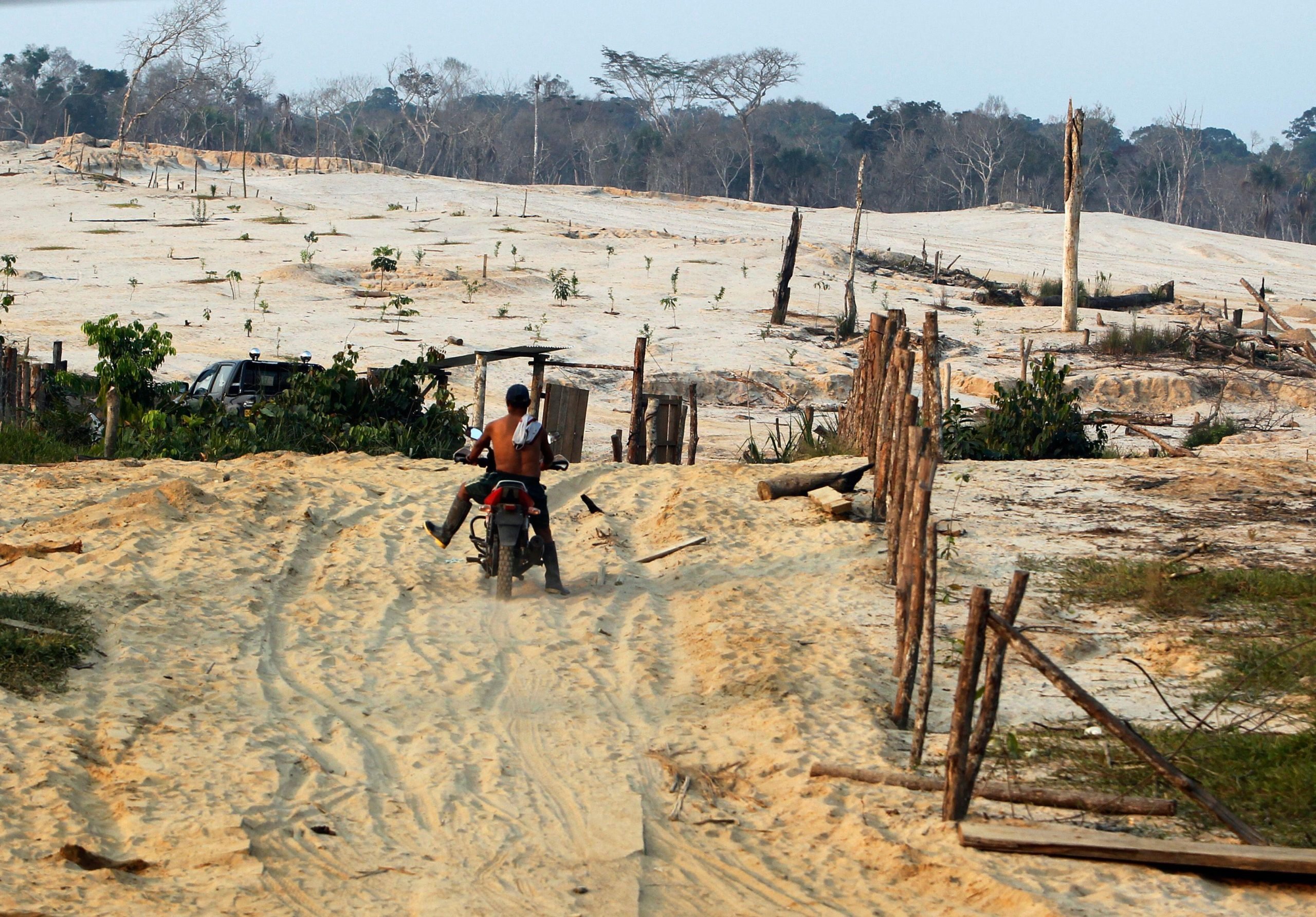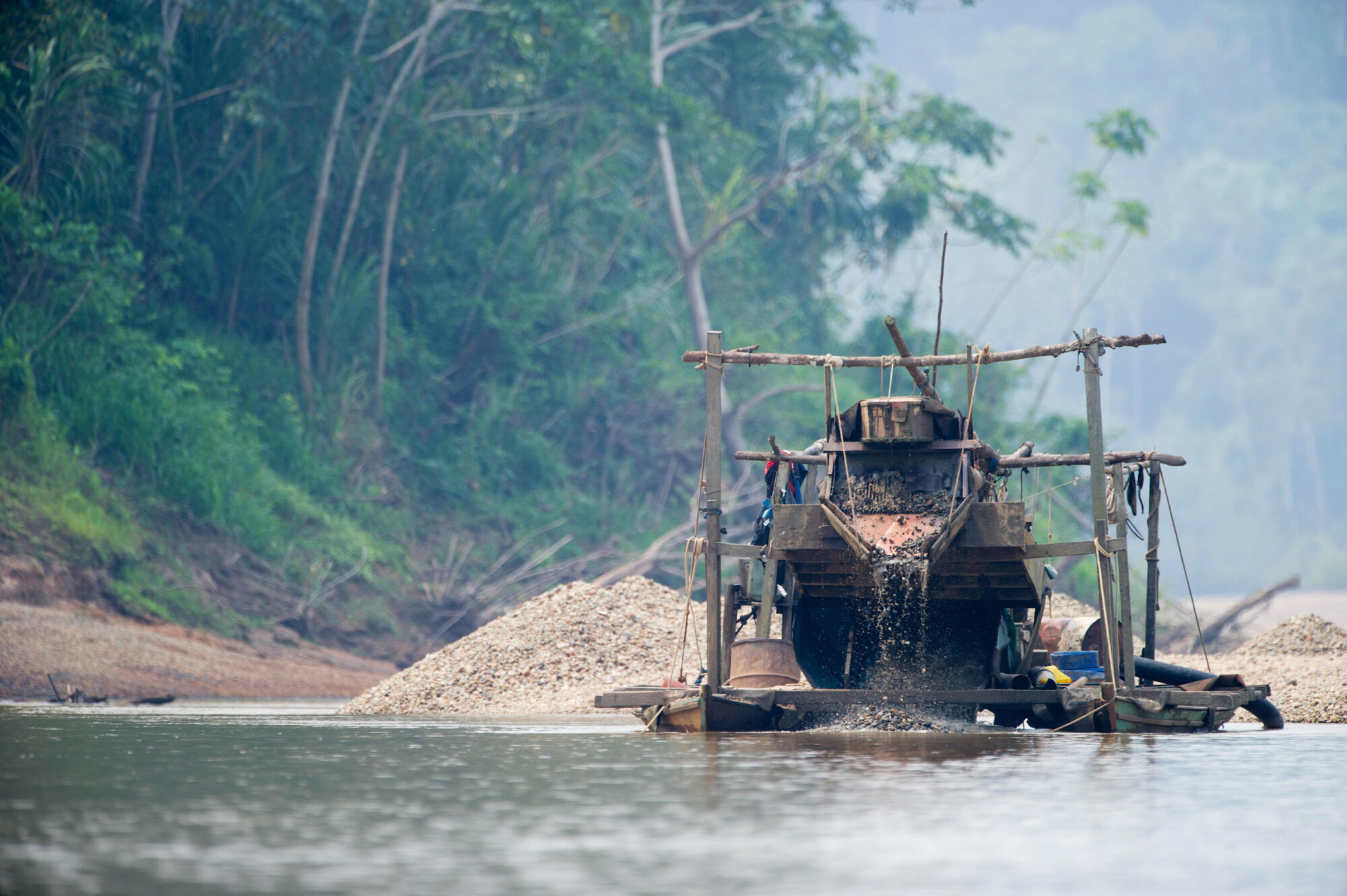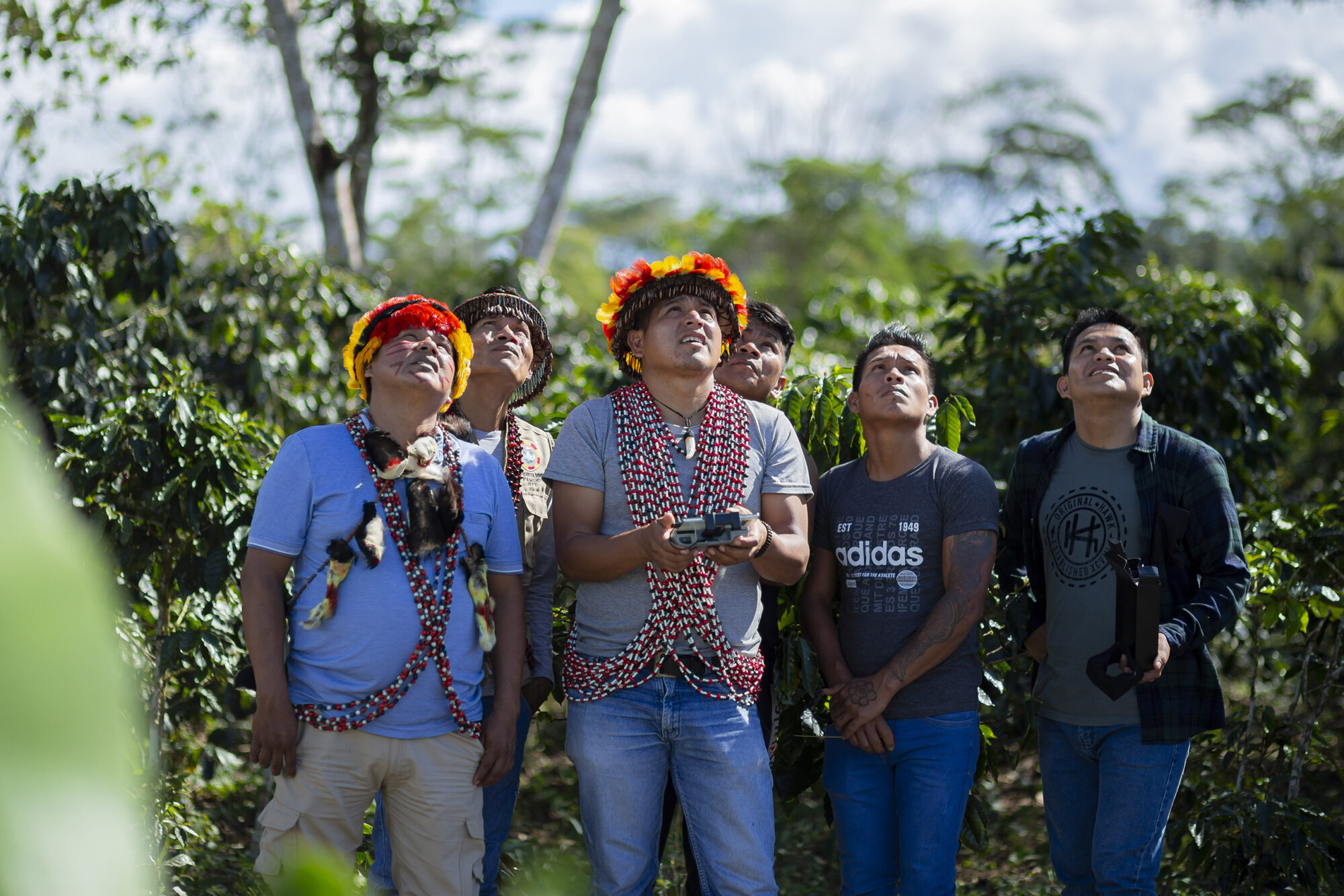The Amazon is on red alert. In Peru, land speculators, illegal loggers and gold prospectors are destroying the rainforest at an accelerating rate. In 2020, deforestation reached its highest levels in two decades, according to official figures.
As these threats grow in strength, organisations from around the world are coming together to employ new technologies to protect the Amazon, putting them in the hands of environmental defenders – the people who live in and depend on the lungs of the world.
Indigenous alerts
Invasions, forest fires, oil spills and the murder of defenders are pervasive threats to Indigenous territories, according to the Inter-Ethnic Association for the Development of the Peruvian Rainforest (Aidesep), which represents 2,439 Indigenous communities in Peru. But until recently, it was almost impossible for the communities themselves to warn of these dangers.
“We made reports on paper,” recalls Lenín Sánchez, Aidesep’s monitoring coordinator. “There was no way to collect evidence, and when we went to the authorities they ignored us.”
Sánchez is an expert in Aidesep’s Early Warning and Action System (SAAT) – a new platform that has begun to change this dynamic. The association uses the system to monitor threats in Indigenous territories and predict their possible effects. So far, it has installed monitoring points in eight of the most threatened Indigenous communities in Amazonas, Loreto and Ucayali, in Peru’s northeast. These provide communities with drones, GPS, smartphones and other tools to monitor and warn of potential threats.
“The SAAT generates real-time alerts and makes it possible to anticipate at what time and place a threat can trigger dangerous situations,” Sánchez told Diálogo Chino.
This innovative system can help prevent conflicts, as was seen in Shambo Porvenir in Ucayali, Peru’s second-largest Amazon region. While flying a drone over their territory, the Indigenous observers discovered camps had been set up on their land by local farmers and issued an alert. “We immediately suggested as a preventive measure that they talk to the invaders, and so we were able to avoid a conflict,” says Sánchez.

Beyond the environmental threats, the system also showed its value in the worst moments of the Covid-19 pandemic. “There was uncertainty about how we were going to survive and the state had no information about our situation,” says Sánchez. The SAAT was used to track infection hotspots so that aid could reach the most affected communities.
“There is still a lot to do, but the SAAT is already helping a lot to prevent conflicts and provide clarity,” Sánchez says. The system has made it possible to verify the main threats facing communities in different regions: invasions in San Martín, oil spills in Loreto, illegal mining in Amazonas and logging to clear space for monoculture plantations in Ucayali. It has also made it possible to track environmental defenders being harassed for protecting their territory.
A real-time timber detector
Illegal timber trafficking is the third most profitable transnational crime, after drugs and counterfeit goods, according to Interpol. In fact, it is estimated that up to 30% of all timber traded in the world is logged illegally, according to the United Nations Environment Programme. In Peru, the figure rises to 37%.
37%
of all timber traded in Peru is logged illegally
Traffickers often “launder” timber, mixing timber obtained legally with wood extracted through bribes, as well as with false licences and documentation.
Xylotron was developed to combat this. A machine vision technology, it allows operators to identify timber species automatically and in real time, without the need for a laboratory.
The system consists of a laptop connected to a camera that captures images of cross-sections of a wood sample. Its software makes it possible to compare the image with a database of tree species worldwide, and flag up species that have been mislabelled or may have been logged illegally.
As the technology was developed by the US Forest Service, its species bank was initially quite limited and only included cedar and mahogany from South America. Since 2018, a team of specialists in Peru has been incorporating national species such as the tornillo (Cedrelinga catenaeformis), one of the most commonly extracted from the Peruvian rainforest, and the huayo sugar (Hymenaea oblongifolia Huber), among others. The work is being led by the Ministry of Production’s Centre for Productive Innovation and Technology Transfer of Wood (CITEMadera).

“It can’t be done with just any wood sample,” José Ugarte, principal investigator of the Xylotron project in the country, told Diálogo Chino. “We are using samples that have botanical backing, collecting not only the wood but also its leaves, flowers and fruits.”
For greater precision, the bank will be expanded to 41 of Peru’s most commercially important timber species. “This way we will be more efficient at ports, checkpoints and maritime customs, in all those places where quick decisions have to be made,” explains Ugarte. He believes this technology will help curb traffickers who, in the meantime, continue to put at risk the survival of trees such as the shihuahuaco (Dipteryx micrantha) and the tornillo.
A radar against illegal mining
A gold rush has destroyed forests that once teemed with life in Madre de Dios, in southeastern Peru, which borders Brazil and Bolivia. In 2017, gold mining reached crisis levels, wiping out almost 10,000 hectares of forest, according to the Amazonian Science Innovation Centre. The most critical area has been La Pampa, in the buffer zone of the Tambopata National Reserve, which lost 1,685 hectares that same year, according to the Monitoring of the Andean Amazon Project (MAAP).
Until recently, initiatives such as MAAP used optical satellite imagery to track this destruction from illegal mining, as its effects are visible from space. However, they failed to capture it during the rainy season. For about four months, the illegal miners had nature on their side.
“Mining is carried out throughout the year regardless of the season, but the monitoring we were doing was very limited during the rainy season because of the greater presence of clouds,” says Sidney Novoa, an expert from the NGO Amazon Conservation (ACCA), which leads MAAP. “The solution was to use radar, which is a technology capable of penetrating the clouds and gives us information all year round.”
The Radar Mining Monitoring Tool (RAMI), created in 2020, uses satellite and radar to monitor the advance of illegal mining throughout the year and generate early warnings of new fronts. RAMI was developed by ACCA as part of the SERVIR-Amazon programme run by NASA and the United States Agency for International Development (USAID).
The tool has been adopted by the Peruvian state and by Indigenous peoples.

In 2019, the Peruvian government launched Operation Mercury – a series of military interventions that apprehended and expelled illegal gold miners from the southern region of Madre de Dios where their camps had been destroying thousands of acres of forests. One consequence is that the mining mafia have moved from La Pampa to the Indigenous territories, according to RAMI’s monthly bulletins.
For the Federación Nativa del Río Madre de Dios y Afluentes (Fenamad), an organisation representing Indigenous peoples in the region, tracking mining represents a great risk to the lives of environmental defenders. Last year, Juan Julio Fernández Hanco was murdered after 11 years of threats from illegal miners.
This is when technologies such as RAMI become vital. Fenamad has 53 people monitoring 300,000 hectares of ancestral forests, more effectively and safely than was possible before.
“The observers do not enter where the organised criminal miners are, but rather we use the technology to verify that deforestation is taking place,” explains Alexander Noa Sillo, head of the Forest Oversight Programme created in 2013 to monitor threats to Indigenous territories.
Every month, each overseer carries out two patrols in the field and sends an alert through the Forest Link application, which is then verified by technicians from the federation. “With RAMI we compare these alerts and prepare legal reports to make complaints to the authorities,” says Noa.
